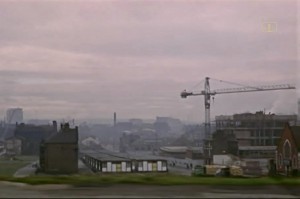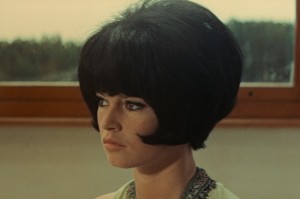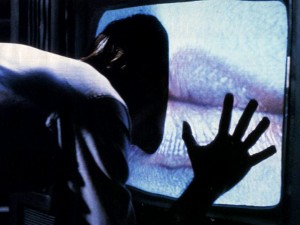A Questioning Nature: Frankenstein
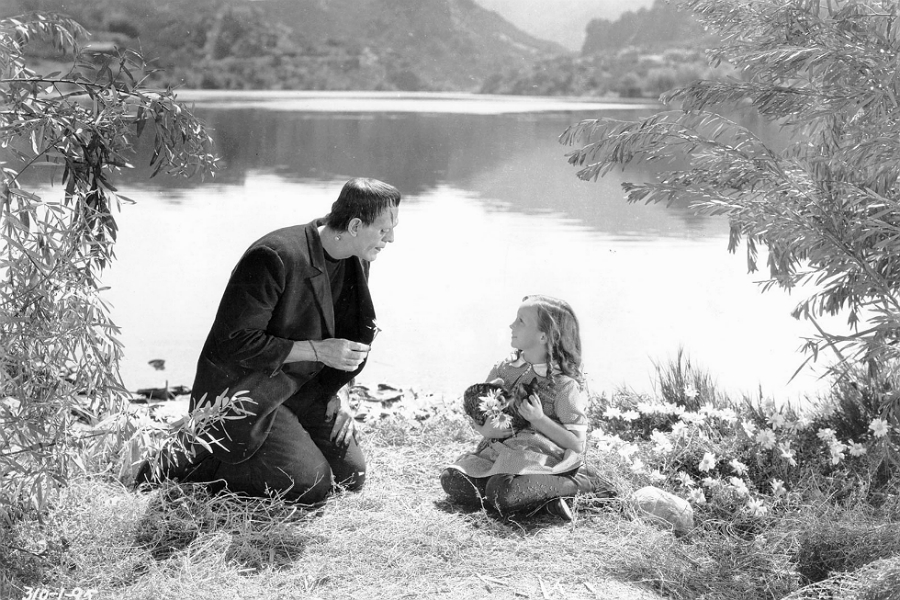
Adam Scovell takes a second look at this definitive horror film and finds subversion, satire and an underrated director …
Though its screening is more of a tie-in to science and technology than the deeply philosophical questions it raises, Frankenstein (1931) is a film that transcends the boundaries of entertainment by smuggling in a questioning nature, stark visual qualities, and an adaptation streamlined perfectly for the medium of cinema.
The narrative is relatively simple; Dr Frankenstein infuses the spark of life into a creature he has put together from the remnants of the dead. The creature awakens to find itself in a world that cannot understand the ‘unlike’, and is forced into ever more violent and desperate situations as it attempts to survive.
The film is interesting for a number of reasons. It resembles Mary Shelly’s novel fleetingly, with some characters and events lifted, but often reversed in order. The novel of 1818 is more about flashback and scientific regret with hindsight, in the form of a number of letters as well as prose. Its monster is less monstrous, aware of the potential philosophical crimes committed with its own creation, and vengeful in its actions. James Whale’s film bears far more resemblance to its (admittedly unsuccessful) stage play by Peggy Webling; a writer persuaded to do it by Hamilton Deane who was responsible for the West End adaptation of Bram Stoker’s Dracula, which would go on to be the blue print for Tod Browning’s adaptation of the film (also made in 1931).
With Frankenstein being only his third full film, there is much to praise about the oft-underrated James Whale. Though scripting duties fell from hand to hand, thanks to Carl Laemmle Jr.’s lack of attention span at the initial contract meetings with Richard Shayer (writer of the first draft) and Robert Florey (final script in partner with scenarist Garrett Ford amongst others), it is Whale who can be seen as the driving force behind western horror’s first truly great film. Whale is a wonderfully subversive character whose name still rings of Hollywood mystery and sadness due to the tragic circumstances of his suicide.
However, for now, Whale was finding his creative mojo, and horror had just been proven to be worth its money, with Dracula making a hefty profit for Universal. This would be the genre he would come to define and hone. It seemed the genre was a natural go-to for story telling from relatively early in film’s history, yet Frankenstein is different. It may share some of the best of visual qualities with earlier horror (especially the more expressionistic films of Robert Weine, Paul Wegener and F.W Murnau), but there’s an extremely modern feel to the story and this can no doubt be attributed to Whale.
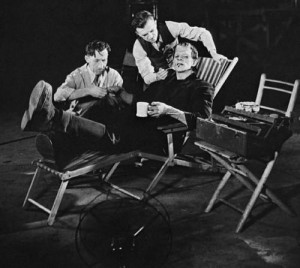
It seems to have barely aged. The issues that the film deals with (completely outside of the novel’s relatively strict ‘Man shouldn’t play God’ motif) are not just morality, but that of race and xenophobia; prejudice against those who cannot be related too. Whale was gay in a time before the concept of equality which, according to Mark Gatiss, can explain his subversive, modern humour found in later films such as The Old Dark House (1932) and The Bride of Frankenstein (1935). Frankenstein however is rather devoid of this, instead marvelling in the darkest corners of human nature, happily coated in a veil of chilling entertainment.
Victor of the novel becomes Henry; an egotistical, tunnel-visioned scientist, unaware of his own moral lucidity. He creates ‘the monster’, though his endeavours don’t have a particularly clear meaning other than the most childish of scientific curiosity. Whale is extremely clever in what he shows the viewer in terms of the monster created. The characters react to it in a very obvious way; horrified at its very creation and physical nature. Their actions lead to them being the most monstrous beings in the film (similarly taken up later in David Lynch’s The Elephant Man (1980)). In the highest of irony, Boris Karloff is the only decent creature on screen for the most part of the film.
The hint at racism is there, heightened further by Karloff apparently bringing in some of his own experiences to the performance. It is a magnificent one, full of pathos and tragedy that is really one of the great psychological dramas of American cinema. The audience knows that the creature is really not the monster. Even the younger characters in the film grasp this. His accidental killing of a young girl only shows his own childlike lack of understanding (something that would later be mimicked to far more disturbing effects in Sam Peckinpah’s Straw Dogs (1971)), though, being too much for the censors at the time, this scene was only restored relatively recently.
Even the more religious tones of the film had to be edited for certain states, especially the implications of the line “Now I know what it’s like to be God!”. This also seems to have happened for the film’s sequel which features far more obvious, visual ties to religious imagery. All of this only adds to Whale’s reputation as a maverick though with his satire being far ahead of its time. This is a director who was pushing the boundaries of what was deemed acceptable and doing it using big studio money.
So much of horror’s history is accounted to Tod Browning and Bela Lugosi, but there’s a much stronger argument for Whale and Karloff’s contribution. However, moving outside of horror circles, we visit a strange case of laxity when it comes to appreciating the genre, even in its most brilliantly pulpy form. Frankenstein is being screened at FACT yet, looking at their page for the film, it’s not out of the realms of fantasy to consider that their advertising of the film was quickly put together at the last minute.
The information given quotes the wrong actor as Henry Frankenstein (it is in fact Colin Clive and not Edward Van Sloan) and even uses an image from House of Frankenstein (1944) where Karloff is the Doctor (actually a Doctor Niemann) and not the monster. It’s slapdash things like this that hint at the lack of respect for horror as a creative avenue (though perhaps it is more the pedantic nature of this horror fan instead).
Frankenstein showed a far more mature, visually exciting and critically engaging ethos to the genre that would go on to be the blue-print of horror as an entertaining piece of questioning subversion. It may barely be over an hour long but in that short space of time, Whale and Karloff would show just what horror cinema could be; entertaining, beautiful, questioning but most importantly, relevant.
Adam Scovell
Frankenstein screens at FACT Weds 23rd January 2013 6.30pm, alongside an introduction by Senior Lecturer in History of Medicine at the University of Liverpool, Dr Sally Sheard. She will be sharing some perspective on British medicine at the time Mary Shelley was writing the original tale in the 19th century.



